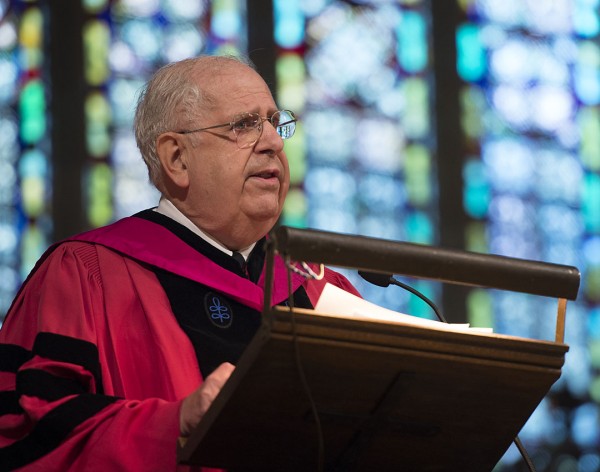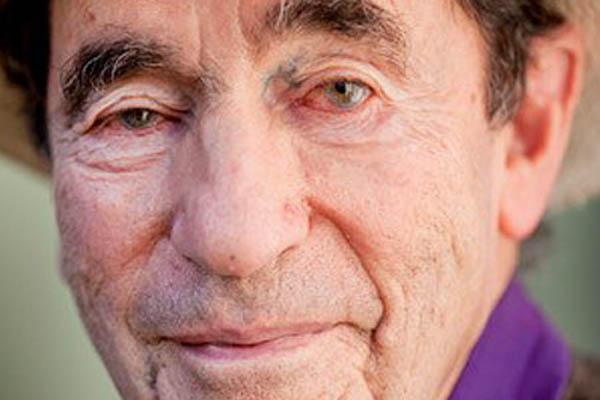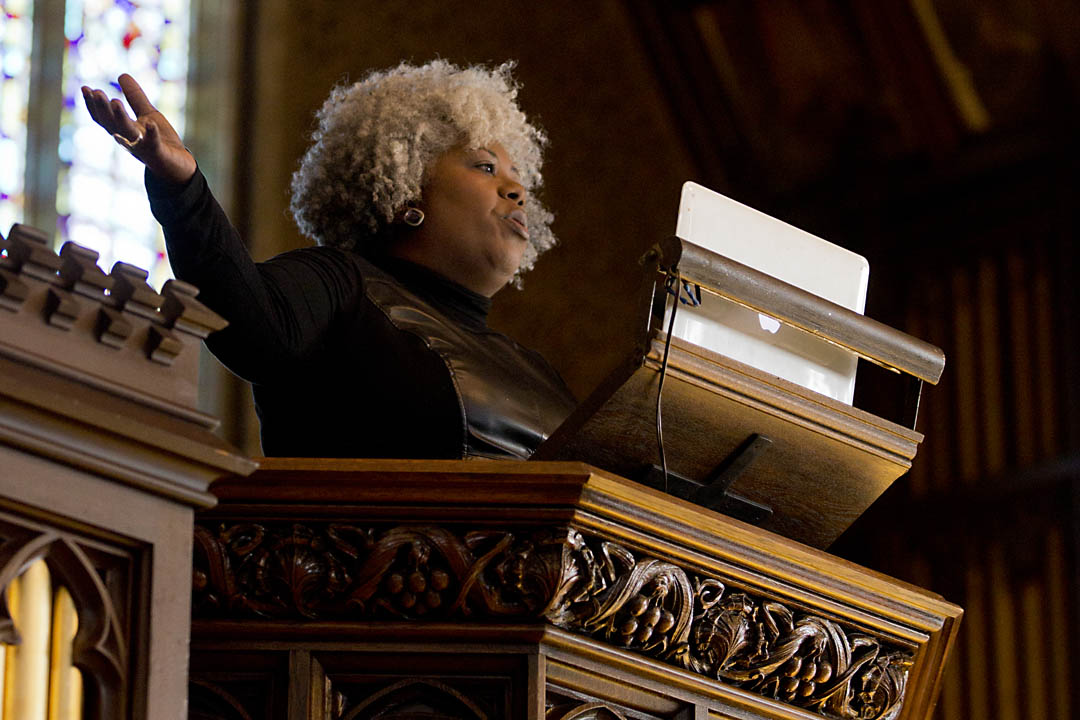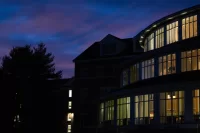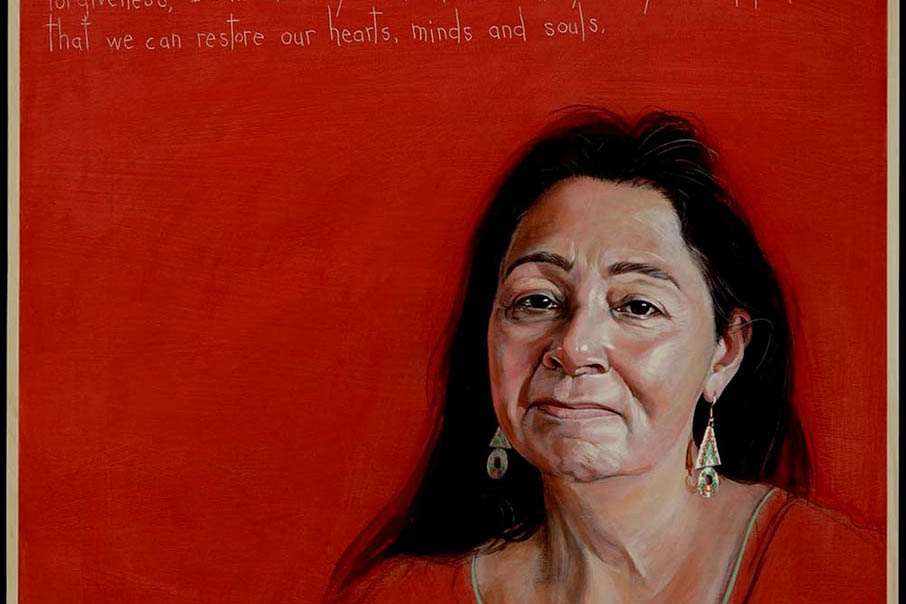
Peter Gomes ‘cherished’ the Chapel that now carries his name
The Bates College Chapel became the Peter J. Gomes Chapel on Oct. 25 as hundreds of friends and colleagues of the late preacher and teacher gathered to remember him in words and song.
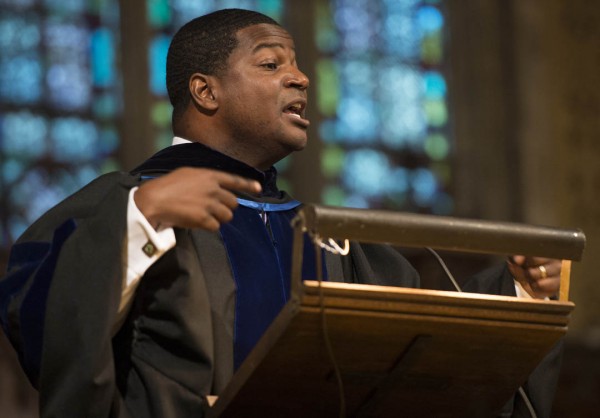
The Rev. Jonathan Walton, Peter Gomes’ successor as Plummer Professor of Christian Morals and Pusey Minister in The Memorial Church at Harvard, delivers the sermon at the service of naming the Gomes Chapel. Photo: Mike Bradley/Bates College.
Thoughtfully programmed, the 90-minute chapel service painted a picture of the complex and beloved Gomes, one of the brightest lights in the constellation of Bates alumni. From the invocation by Bill Blaine-Wallace, multifaith chaplain at Bates, to the benediction by Emily Wright-Magoon, associate multifaith chaplain, the service established Gomes’ personal and intellectual ties to Bates, the college that he credited as a formative force in his life.
Ultimately, in the sermon of the Rev. Jonathan L. Walton, Gomes’ successor as Plummer Professor of Christian Morals and Pusey Minister in The Memorial Church at Harvard, the event situated Gomes and Bates in a greater moral landscape illuminated by faith, tenacity and hope.
“He relished this college, he cherished this chapel.”
And all this in a setting in which Gomes would likely have found much delight. “He relished this college. He cherished this chapel,” as one of the speakers, Carl Benton Straub, professor emeritus of religion and Clark A. Griffith Professor Emeritus of Environmental Studies, told the crowd.
Just days before the 100th anniversary of the groundbreaking for the building, its stone walls were warmed by the presence of hundreds of people steeped in deep feeling for its namesake, ornamented by pomp and spectacle, and bathed in music from Bach to Paganini to Gomes’ Harvard friend Carson Cooman.
In timing and content, the service also served as prelude to the much-anticipated inauguration of A. Clayton Spencer as Bates’ eighth president on Oct. 26. Bates trustees, active and retired, were on hand for the naming, as were three of Spencer’s predecessors as Bates president: Donald Harward, Elaine Hansen and Nancy Cable, whose term as interim president directly preceded Spencer’s.
A handful of the delegates who will represent different educational institutions at Spencer’s installation were also in attendance. And the service highlighted the Bates-Harvard bond embodied by Gomes and now by Bates’ new president, who served Harvard for 15 years, most recently as vice president for policy. In addition to Walton, that little school down the road in Cambridge also sent the Rev. Wendel W. Meyer, associate minister for administration in The Memorial Church to Bates to speak.
Also among the Harvard contingent was violinist Ryu Goto, Harvard ’11, a Deutsche Grammophon recording artist whose virtuosic rendition of a work by Paganini seemed to capture in sound the diverse dimensions of Gomes’ character.
Courage, intelligence, delight, generosity, and humility.
If Straub provided the closest focus on Gomes’ time at Bates, it was Meyer who gave us the closest analysis of his character. The eloquent Meyer cited five qualities that he associates with his former colleague: courage, intelligence, delight, generosity, and humility — and founded on and enabled by a profound Christian faith.
The scripture reading for the service was Hebrews 12:1, which exhorts the reader to cast off impediments and run before the eyes of a “cloud of witnesses” who have made that same journey.
In his sermon, Walton built a long and masterful rhetorical arc from his relationship with President Spencer, through past Bates presidents and other central figures, to the inspirational story of injured Olympic runner Derek Redmond hobbling across the finish line with his father by his side — and finally brought it home by reminding his listeners of the lesson from Ecclesiastes that the race is not given to the swift nor the strong, but to him or her who endures to the end.
